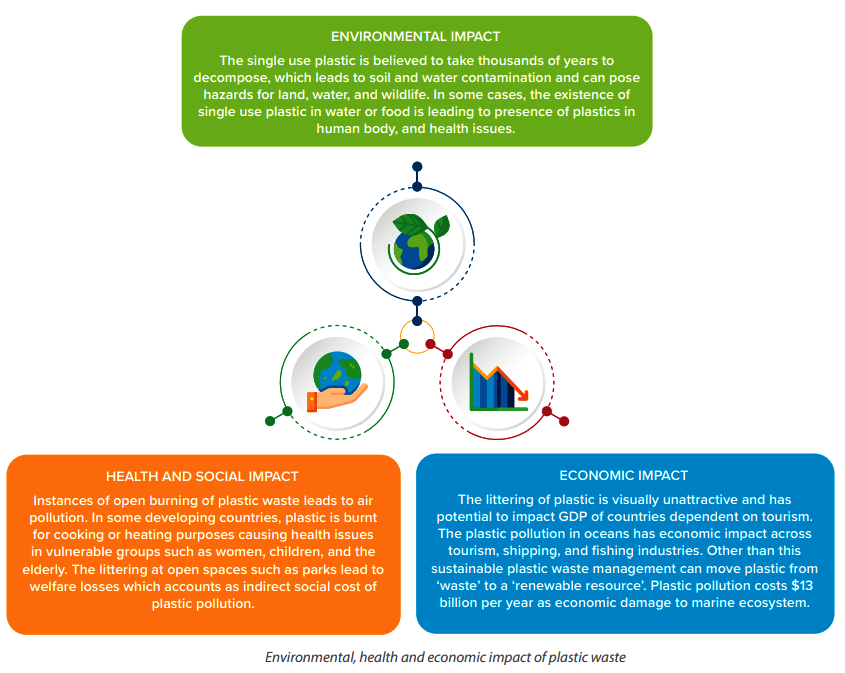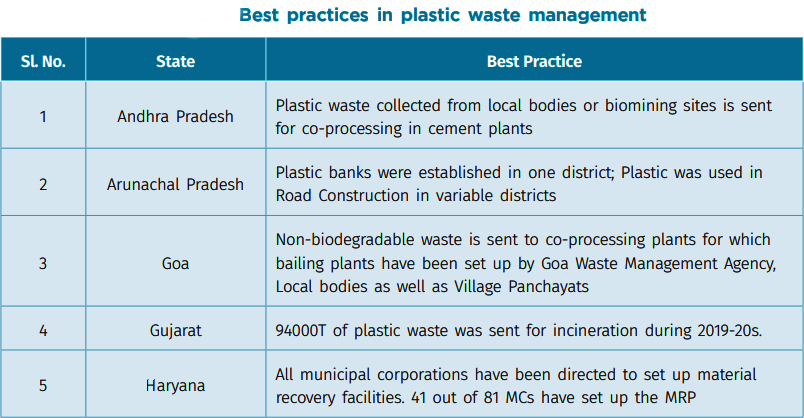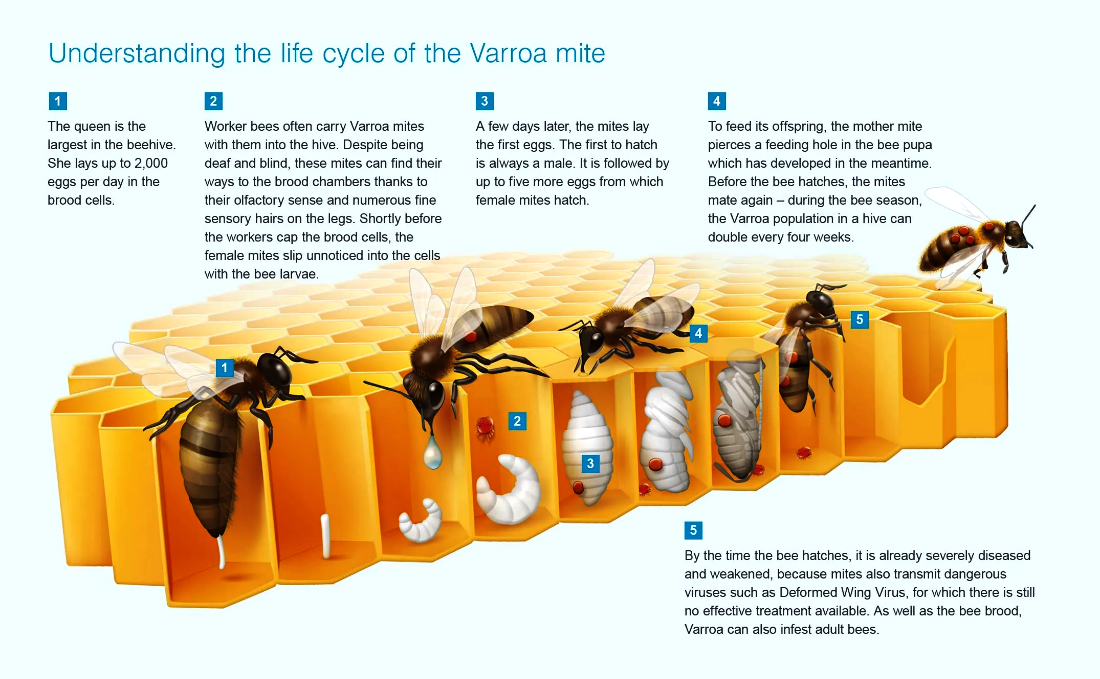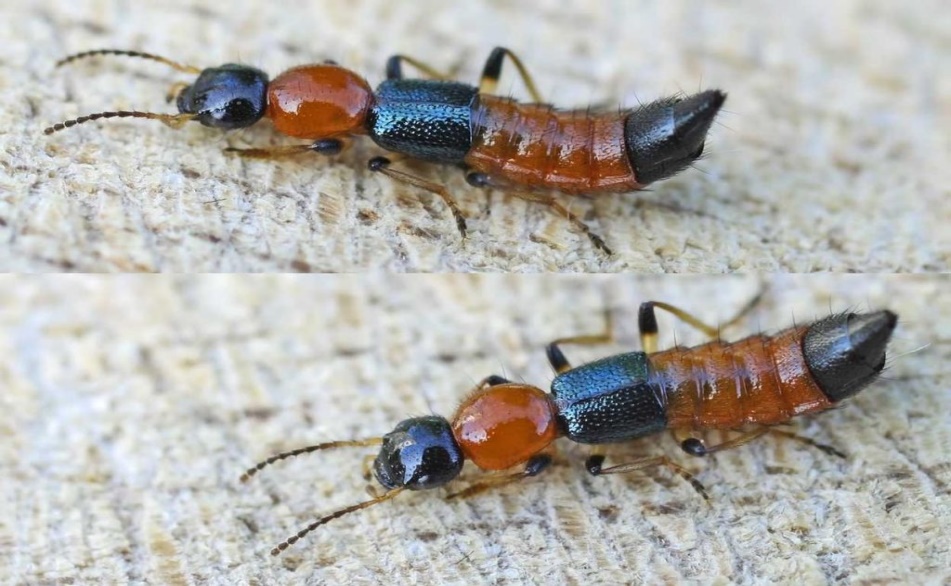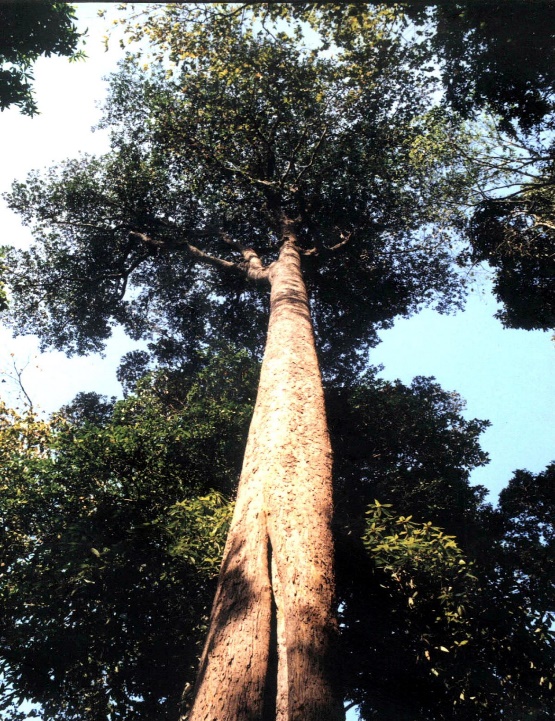International Relations
The African Union at 20
For Prelims: Countries in African Continent, Minerals of Africa, Horn of Africa, International Institutions
For Mains: India Africa Relations and Agreements, Significance of Africa in Indian Economy, Presence of China in Africa, Challenges for Africa
Why in News?
The African Union is celebrating its 20th Anniversary on 9th of July 2022.
What Do We Know About African Union?
- About:
- The African Union (AU) is a continental body consisting of the 55 member states that make up the countries of the African Continent.
- Formation:
- In 1963, the Organization of African Unity was founded by the independent states of Africa. The organization aimed to promote cooperation between African states.
- The 1980 Lagos Plan of Action was adopted by the Organization of African Unity. The plan suggested that Africa should minimize reliance upon the West by promoting intra-African trade.
- In 2002, the Organization of African Unity was succeeded by the African Union, which had as one of its goals to accelerate the "economic integration of the continent”.
What has the African Union Achieved in 20 Years?
- African Continental Free Trade Area:
- It was established in 2018 by the African Continental Free Trade Agreement (AfCTA).
- AfCFTA seeks to create a single continental market for goods and services, with free movement of business persons and investments, and thus pave the way for accelerating the establishment of the Continental Customs Union and the African customs union.
- The AfCFTA preliminary work is on steps such as incremental tariff reduction, elimination of non-tariff barriers, supply chains and dispute settlement.
- It is expected to boost intra-African trade by about USD35 billion by the end of 2022.
- The larger market area will likely attract investment for continental infrastructure development.
- The increased trade will create jobs, enhance Africa’s global competitiveness, improve social welfare and position Africa for greater industrialisation.
- It was established in 2018 by the African Continental Free Trade Agreement (AfCTA).
- Diplomatic Achievement:
- AU has established a permanent mission in Beijing, China, to strengthen economic, commercial and cultural ties with Africa’s largest trading partner.
- This consolidates Africa’s global profile and ability to speak with one voice on world affairs.
- AU has established a permanent mission in Beijing, China, to strengthen economic, commercial and cultural ties with Africa’s largest trading partner.
- Women’s Economic Financial Inclusion:
- AU championed a 10-year continental declaration aimed at gender equality and women’s empowerment that was introduced in February 2020.
- This declaration, called the Decade of Women’s Financial and Economic Inclusion, sees African leaders commit to taking action for gender inclusion towards sustainable development at national, regional, and continental levels.
What are the Challenges the African Union is Facing?
- Unconstitutional Hold on Power:
- Africa has seen a troubling resurgence of military coups and leaders using unconstitutional means to cling to power.
- There have been at least 32 coups and coup attempts since 2013.
- Five out of the seven coup attempts since 2020 succeeded.
- The coup leaders in the five countries — Burkina Faso, Chad, Guinea, Mali and Sudan — violently suppressed pro-democracy protesters.
- The death toll from the suppression of anti-coup protests in Sudan, for instance, is over 100. Over 18 million Sudanese are threatened by food insecurity.
- Africa has seen a troubling resurgence of military coups and leaders using unconstitutional means to cling to power.
- Disregard for the Rule of Law:
- An increasing number of democratically elected and legitimate governments are cracking down on civil society organisations.
- The governments are squeezing out institutions that should hold them accountable and are silencing the media.
- They arrest activists and enact laws that restrict civil society organisations and their activities.
- UNSC:
- The UN Security Council is yet to give Africa at least two permanent seats.
- Over two-thirds of the council’s agenda concerns Africa, yet the continent is excluded from permanent representation.
- The UN Security Council is yet to give Africa at least two permanent seats.
How has Indian African Relations Been?
- Social Infrastructure:
- The India-Africa social infrastructure (education, health, skills) cooperation is multidimensional, comprehensive, and involves national, state, and subnational actors working toward augmenting African institutional and individual capacities.
- Common Geo-Political Interests:
- India and Africa have common interests on international issues, UN reforms, counter-terrorism, peacekeeping, cybersecurity, and energy security.
- Economic Cooperation:
- India’s economic engagement with Africa is substantive.
- In the last decade and a half, trade between India and Africa has multiplied and diversified–bilateral trade of USD63.3 billion in 2018-19 made India the third-largest trading partner for the continent.
- Support in Fight Against Covid-19:
- Under the e-ITEC initiative, India has shared Covid-19 management strategies, training webinars exclusively to train healthcare professionals from Africa by Indian health experts.
- India is also sending consignments of essential medicines, including hydroxychloroquine (HCQ) and paracetamol, to many African countries in addition to doctors and paramedics.
- Under the e-ITEC initiative, India has shared Covid-19 management strategies, training webinars exclusively to train healthcare professionals from Africa by Indian health experts.
- Recent Development:
- India’s first high-level visit in Africa for 2022 took place and following developments took place:
- India announced the Phase-II upgradation of Entrepreneurship Development and Technology Centre (CEDT) in Dakar, built with Indian grant assistance.
- India also offered a Special ITEC English proficiency course for Senegalese public servants.
- India announced a Special training programme for a batch of 15 Senegalese diplomats at Sushma Swaraj Institute of Foreign Services.
- Both sides signed three MOUs:
- India’s first high-level visit in Africa for 2022 took place and following developments took place:
What are the Possible Opportunities in India Africa Relations?
- Addressing Food security: Agriculture and food security can also be a fulcrum for deepening ties.
- Africa has a major chunk of the world’s arable land but produces a very small percentage of the global agri-output.
- India has proven expertise in the agriculture sector, being the top producer of much agricultural produce.
- Thereby, India and Africa both can cooperate in ensuring food and nutritional security for each other.
- Combating Neo-Colonialism:
- China has been actively pursuing Chequebook and donation diplomacy in Africa.
- However, Chinese investment is seen as neo-colonial in nature as it focuses on money, political influence, hard-infrastructure projects and resource extraction.
- India’s approach, on the other hand, is one that focuses on building local capacities and an equal partnership with Africans and not merely with African elites concerned.
- China has been actively pursuing Chequebook and donation diplomacy in Africa.
- Preventing Global Rivalries:
- In recent years, several global economic players have strengthened their engagement with African states, with an eye to rising economic opportunities, including in energy, mining, infrastructure and connectivity.
- As global engagement in Africa increases, India and Africa can ensure that Africa does not once again turn into a theatre of rival ambitions.
- In recent years, several global economic players have strengthened their engagement with African states, with an eye to rising economic opportunities, including in energy, mining, infrastructure and connectivity.
Way Forward
- The AU should deal decisively with member states that undermine the rule of law within their territories.
- The rule of law is essential for sustained and inclusive economic growth, sustainable development, and the eradication of poverty and hunger.
- The rule of law enables people, business and commerce to flourish.
- African leaders should address the problems which military leaders use as the pretext for coups in African states — mainly corruption, misrule and insecurity. Solving these problems would deny the military an excuse to interfere in civilian matters.
- Instead of cracking down on citizens and civil society, states should use their natural resources to grow their economies and empower citizens.
- Collective economic strength will improve Africa’s standing as a global actor.
- The AU must also be firm and consistent in dealing with constitutional violations.
- Recent examples show that perpetrators simply defy calls to restore constitutional order.
Indian Economy
Development of Enterprise and Service Hubs Bill
For Prelims: Special Economic Zone, Equalization Levy, Minimum Alternate tax, Sunset Clause
For Mains: Development of Enterprise and Service Hubs Bill and its Significance
Why in News?
The Government plans to table the Development of Enterprise and Service Hubs (DESH) Bill during the upcoming monsoon session of the Parliament.
What is DESH Bill?
- It will overhaul the existing Special Economic Zone law of 2005, aims to revive interest in SEZs and develop more inclusive economic hubs.
- SEZs will be revamped and renamed as Development hubs and will be free from a number of the laws that currently restrict them. These hubs will facilitate both export-oriented and domestic investment, playing the dual role of domestic tariff area and SEZ.
- The government may impose an equalization levy on goods or services supplied to the domestic market to bring taxes at par with those provided by units outside.
Why replace the existing SEZ Act?
- WTO’s dispute settlement panel has ruled that India’s export-related schemes, including the SEZ Scheme, were inconsistent with WTO rules since they directly linked tax benefits to exports.
- Countries are not allowed to directly subsidize exports as it can distort market prices.
- SEZ started declining after the introduction of minimum alternate tax and a sunset clause to remove tax sops.
- SEZ units used to enjoy 100% income tax exemption on export income for the first five years, 50% for the next five years, and 50% of the ploughed back export profit for another five years.
How is the DESH Legislation Significant?
- Development Hubs:
- Beyond promoting exports it has a much wider objective of boosting domestic manufacturing and job creation through ‘development hubs’.
- These hubs will no longer be required to be net foreign exchange positive cumulatively in five years (i.e, export more than they import) as mandated in the SEZ regime, and will be allowed to sell in the domestic area more easily.
- The hubs will, therefore, be WTO-compliant.
- Online Portal for Approvals:
- DESH legislation provides for an online single-window portal for the grant of time-bound approvals for establishing and operating the hubs.
- Boost Domestic Market:
- Companies can sell in the domestic market with duties only to be paid on the imported inputs and raw materials instead of the final product.
- In the current SEZ regime, duty is paid on the final product when a product is sold in the domestic market. Besides, there is no mandatory payment requirement in forex, unlike in the case of SEZs.
- Companies can sell in the domestic market with duties only to be paid on the imported inputs and raw materials instead of the final product.
- Larger role for States:
- State boards would be set up to oversee the functioning of the hubs. They would have the powers to approve imports or procurement of goods and monitor the utilization of goods or services, warehousing, and trading in the development hub.
- In the SEZ regime, most decisions were made by the commerce department at the Centre. Now, states will be able to participate and even directly send recommendations for development hubs to a central board for approval.
- State boards would be set up to oversee the functioning of the hubs. They would have the powers to approve imports or procurement of goods and monitor the utilization of goods or services, warehousing, and trading in the development hub.
Biodiversity & Environment
Plastic Waste Minimisation: NITI Aayog
For Prelims: Single Use Plastics and its uses, Extended Producer Responsibility (EPR)
For Mains: Need for alternatives of Single use plastics, Plastic Waste Management (Amendment) Rules, 2022
Why in News?
Recently, NITI Aayog has releases a report titled ‘Alternative Products and Technologies to Plastics and their Applications’ to encourage use of alternatives of plastics.
- The Ministry of Environment, Forest and Climate Change has also banned Single Used Plastics (SUP), violation of the ban will invite punitive action under Section 15 of the Environment Protection Act (EPA).
What are the Findings of the Report?
- Global Plastic Production and Disposal: Between 1950–2015, the cumulative production of polymers, synthetic fibre and additives was 8,300 Million Tonnes (MT), of which 55% went straight to landfills or were discarded, 8% incinerated, and only 6% were recycled.
- By 2050 if production is continued at the same rate, it would generate 12,000 MT.
- India’s Case: India produced 3.47 million tonnes of plastics waste per Annum, with the per capita waste growing from 700 grams to 2,500 grams over the last five years.
- Goa, Delhi & Kerala have reported the highest per capita plastic waste generation, while Nagaland, Sikkim and Tripura have reported the lowest per capita plastic waste generation.
- Concern: Globally, 97-99% of these plastics are derived from fossil fuel feedstock while the remaining 1-3% come from bio (plant) based plastics.
- Only a small amount of this plastic waste gets recycled, adding that a majority of this waste leaks into the environment through various polluting pathways.
- India collects only 60% of its plastic waste with the rest 40% remaining uncollected and enters the environment directly as waste.
- Nearly every piece of plastic begins as a fossil fuel, and greenhouse gases (GHG) are emitted at each stage of the plastic lifecycle: a) fossil fuel extraction and transport, b) plastic refining and manufacture, c) managing plastic waste, and d) ongoing effects within oceans, waterways, and various ecosystem landscapes.
What are the Recommendations?
- The most preferred option for the management of waste is waste minimisation. Strengthen the waste minimisation drive through Extended Producer Responsibility (EPR), proper labelling and collection of compostable and biodegradable plastics, while relaxing the deadline for adoption of biodegradable plastic.
- Develop emerging technologies, e.g., additives can make plastics biodegradable polyolefins, such as polypropylene and polyethylene
- Use of Bio-plastics: as a cost-effective alternative to plastics.
- Encourage R&D (Research and Development) and incentivize the manufacturing sector.
- Enhance transparency in disclosing waste generation, collection, recycling or scientific disposal to bring accountability and avoid greenwashing.
- Greenwashing is the process of conveying misleading information about how a company’s products are more environmentally sound.
What can be the Alternatives to Plastics?
- Glass:
- Glass has always been the safest and the most viable option for the packaging and use of food and liquid.
- Glass can be recycled multiple times, so it doesn't have to end up in landfills. It is cost-effective, considering its durability and recyclability.
- Bagasse:
- Compostable, eco-friendly bagasse can replace plastic needing as disposable plates, cups or takeout boxes.
- Bagasse is made from the pulp that is leftover when the juice is extracted from sugarcane or beets. It can be used for other purposes, such as a biofuel.
- Bioplastics:
- Plant-based plastics, known as bioplastics, have been hailed as a green alternative to fossil fuel-based plastic, especially when it comes to food packaging.
- But bioplastics have their own environmental footprint, requiring the growing of crops and therefore land and water use.
- Bioplastics have been shown to be just as harmful, and in some cases more harmful, than conventional plastic.
- Natural Textiles:
- When it comes to replacing polyester and nylon clothing which shed millions of tiny plastic fibres with every single wash, the traditional alternatives are cotton, wool, linen and hemp.
- But the production of cotton has been causing serious threats to the environment and also comes at a human cost.
- When it comes to replacing polyester and nylon clothing which shed millions of tiny plastic fibres with every single wash, the traditional alternatives are cotton, wool, linen and hemp.
- Refill, reuse and buy unpackaged:
- By far the least damaging type of packaging is one that can be used again and again, or none at all.
- Reusable fabric bags for fruit & veg etc.
- Reusable containers and boxes for meat, fish, cheese etc.
- Refillable bottles and jars for oil & vinegar, cleaning liquids etc.
- Beeswax wraps instead of foil and clingfilm.
- By far the least damaging type of packaging is one that can be used again and again, or none at all.
What are the Related Initiatives?
Important Facts For Prelims
Single-Crystalline Scandium Nitride
Why in News?
Researchers at Bengaluru's Jawaharlal Nehru Centre for Advanced Scientific Research (JNCASR) have discovered a new material called "single-crystalline scandium nitride (ScN)" that can convert infrared light into renewable energy.
- To accomplish this feat, scientists used a scientific phenomenon known as polariton excitations, which occur in tailored materials when light couples with either collective free electron oscillations or polar lattice vibrations.
- Infrared light is beyond the light range that is visible to the human eye, and falls between the visible light and microwave regions (the wavelength is longer than visible light).
- Infrared sources, emitters, and sensors are in high demand across a wide range of industries, including electronics, healthcare, defense and security, and energy, further infrared polaritons in scandium nitride will enable its use in a variety of such devices.
What are the Key Highlights of Single-Crystalline Scandium Nitride (ScN)?
- About:
- It has high efficiency in emitting, detecting, and modulating infrared light, making it useful for solar and thermal energy harvesting, as well as optical communication devices.
- Scientists have carefully controlled material properties to excite polaritons (a quasi-particle) and achieve strong light-matter interactions in single-crystalline scandium nitride (ScN) using infrared light.
- Significance:
- As these polaritons in ScN are also compatible with modern complementary-metal-oxide-semiconductor (CMOS) or Si-chip technology and, as such, could be easily integrated into on-chip optical communication devices.
- These exotic polaritons in the ScN can be utilized for solar and thermal energy harvesting.
Important Facts For Prelims
Australia Killing Million of its Bees
Why in News?
Australian authorities have killed millions of honeybees over the past two weeks in an effort to stop a potentially catastrophic parasite plague named Varroa mite.
- The decision to kill honeybees could adversely impact the growth of several crops including almonds, macadamia nuts, and blueberries that are dependent on hives for pollination.
- Bees are some of the most important pollinators, ensuring food and food security, sustainable agriculture, and biodiversity.
What is Varroa Mite?
- Its parasitic insect infects and feeds on honeybees, often known as the varroa destructor. The small pests, which are reddish-brown in colour, have been capable of eradicating entire colonies of honeybees.
- They frequently circulate amongst bees as well as through beekeeping supplies like removed combs.
- Although Varroa mites can feed and live on adult honey bees, they primarily feed and reproduce on larvae and pupae in developing brood, causing malformation and weakening as well as virus transmission.
- As the mite population in bee colonies grows, the symptoms become more severe. In general, heavy infestations result in crippled bees, impaired flight performance, a lower rate of return to the colony after foraging, and reduced colony productivity.
Important Facts For Prelims
Nairobi Flies
Why in News?
Recently, after coming into contact with Nairobi flies, approximately 100 students in East Sikkim have reported skin infections.
What are Nairobi Flies?
- About:
- It's a species of insect native to East Africa.
- Nairobi flies, also known as Kenyan flies or dragon bugs, are small, beetle-like insects of two species:
- Paederus Eximius.
- Paederus sabaeus.
- They are orange and black in colour and thrive in areas with high rainfall, as has been seen in Sikkim in recent weeks.
- Like most insects, they are attracted to Bright lights.
- Historical Outbreaks:
- Significant outbreaks have occurred in Kenya and other parts of eastern Africa. In 1998, unusually heavy rain brought a large number of insects into the area.
- In the past several outbreaks have happened outside Africa like in India, Japan, and Paraguay.
What are their effects on Humans?
- These insects usually don't bite but if they are disturbed during their stay on human skin, they could release a potent acidic substance that can cause burn on human skin.
- The released substance is called Pederin and it can cause irritation on the skin, which leads to lesions or unusual marks or coloring of the skin.
Important Facts For Prelims
Chenkurinji
Why in News?
Chekuriniji has been affected due to climate change, so, there are different conservation measures are being inducted.
What do we know about the Species?
- Chenkurinji (Gluta travancorica), is a species endemic to the Agasthyamala Biosphere Reserve, and inspired the name of the Shendurney Wildlife Sanctuary.
- The Anacardiaceae family tree was once abundant in the hills on the southern parts of Aryankavu Pass, but its presence has been rapidly declining over the years.
- Gluta travancorica flowers in January on average, but the species has recently reported a tendency to extend the process due to climate change.
- It's used to treat lower blood pressure and treat arthritis.
What is Agasthyamal Biosphere Reserve?
- The Agasthyamala Biosphere Reserve, located in the Western Ghats in the country's south, has peaks that rise 1,868 metres above sea level.
- The site, which is mostly tropical forest, is home to various species of higher plants, including which are endemic in nature.
- It is also a unique genetic reservoir for cultivated plants, particularly cardamom, jamune, nutmeg, pepper, and plantain.
- The site contains three wildlife sanctuaries, Shendurney, Peppara, and Neyyar, as well as the Kalakad Mundanthurai Tiger reserve.
What type of conservation measures is being Implemented?
- ‘Save Chenkurinji’, a campaign to be implemented in various areas coming under the Achencoil Forest Division.
- It aims to plant thousands of saplings as part of the campaign in the ghat sectors of the Kollam and Pathanamthitta districts.
- Approximately 75 schools in the area where Chenkurinji will be grown with student help.
- Saplings will be planted in public places in addition to schools, and the forest department has already cultivated thousands of seedlings for Save Chenkurinji.
Important Facts For Prelims
TiHAN: First Autonomous Navigation Facility
Why in News?
Ministry of Science & Technology has inaugurated “Technology Innovation Hub on Autonomous Navigation” or TiHAN, in IIT- Hyderabad, which is a first “Autonomous Navigation” facility.
- It is seen as one of the steps toward India’s vision of ‘Atmanibhar Bharat’, ‘Skill India’ and ‘Digital India’.
What is TiHAN?
- It is a multidisciplinary initiative, which aims at making India a global player in the futuristic and next-generation “Smart Mobility” technology.
- The multi-departmental initiative includes researchers from electrical, computer science, mechanical and aerospace, civil, mathematics.
- At present, there is no such testbed facility in India to evaluate the autonomous navigation of vehicles. Therefore, it is envisioned to address this gap by developing a fully functional and exemplary testbed facility dedicated to Connected Autonomous Vehicles (CAVs).
- Connected vehicles use technology to either communicate with each other, connect with traffic signals, signs, and other road items, or obtain data from a cloud. This information exchange helps with safety and improves traffic flow.
What is the Significance of this Step?
- It will provide a unique platform for high quality research between academia, industry and R&D labs both at the national and international level, thus making India a global leader in autonomous navigation technologies.
- India’s mobility sector is one of the world’s largest markets and the TiHAN - IITH will be the source of futuristic technology generation for autonomous vehicles.
- The TiHAN-IITH testbed on Autonomous Navigations (Aerial & Terrestrial) will allow us to test the next generation autonomous navigation technologies accurately and allow faster technology development and global market penetration.

